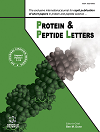
Full text loading...

The increasing resistance of fungal pathogens to conventional antifungal treatments has led to a global rise in fungal infections, affecting human health (Candida spp.) and agricultural productivity (Colletotrichum and Fusarium spp.). Antimicrobial peptides (AMPs), such as defensins, have gained attention for their potential in controlling these infections due to their broad-spectrum activity.
The aim of this study was to partially purify and characterize the antifungal activity of a defensin-enriched fraction (F3) from Capsicum chinense fruits. Specifically, we sought to evaluate its efficacy against pathogenic fungi and yeasts, and to assess the relative abundance of defensins in the fraction.
The F3 fraction was obtained using ion exchange and molecular exclusion chromatography. Reverse-phase chromatography (HPLC) was then employed for further purification. The antifungal activity of F3 was tested against Colletotrichum, Fusarium, and Candida species. Mass spectrometry was used to identify and characterize the defensin (CcDef3) within the fraction. The presence of the defensin relative to other components was inferred from electrophoretic profiles and peptide analysis.
The F3 fraction exhibited significant antifungal activity, with growth inhibition of Colletotrichum lindemuthianum of 51% and 60.9% at concentrations of 100 and 200 μg mL-1, respectively. The fraction also inhibited the growth of several Candida species, notably C. nivariensis (93.8%) and C. bracarensis (79.6%) at 100 μg mL-1. Cell viability analysis indicated a fungistatic effect. Fluorescence microscopy assays showed that F3 induced membrane permeabilization in C. parapsilosis and C. lindemuthianum, and increased ROS production in C. pelliculosa and F. solani. The defensin-rich H8 fraction, containing a 6.5 kDa protein (CcDef3), was identified as a major component via mass spectrometry.
The ongoing development of resistance in fungal strains, particularly Candida species, against traditional antibiotics and antifungals has turned into a significant medical concern and has increased the need for new treatment options.
These results suggest that the F3 fraction, particularly the defensin CcDef3, has potential as an antifungal agent for biotechnological and therapeutic applications. However, further studies are needed to quantify the contribution of CcDef3 relative to other components in the fraction and to fully isolate the defensin for in-depth analysis.

Article metrics loading...

Full text loading...
References


Data & Media loading...